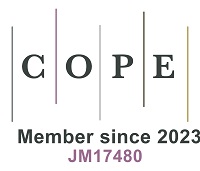REFERENCES
1. Zhu, M.; Liu, Z.; Li, J.; Zhu, S. X. Electric vehicle battery capacity allocation and recycling with downstream competition. Eur. J. Oper. Res. 2020, 283, 365-79.
2. Yu, X.; Ji, Z.; Ji, L.; et al. Analysis on carbon emission reduction potential of electric vehicles in China under goal of carbon neutrality and carbon peaking. Smart. Power. 2024, 52, 25-31+39. Available from: http://zhdlqk.sn.sgcc.com.cn:19001/#/digest?ArticleID=5864 [Last accessed on 23 July 2025].
3. Shi, Y.; Zhang, H.; Yu, Z. Energy saving and emission reduction benefits analysis and environmental impact assessment of electric vehicles throughout their entire lifecycle. Resour Ind 2021;23:100-9.
4. European Commission. A European strategy for low-emission mobility. Brussels, Belgium: 2016. Available from: https://ec.europa.eu/commission/presscorner/detail/nl/memo_16_2497 [Last accessed on 23 July 2025].
5. Ministry of Industry and Information Technology of the People’s Republic of China industrial green development plan (2016-2020). Energy saving in non-ferrous metallurgy 2016:1-7. Available from: https://www.miit.gov.cn/jgsj/jns/wjfb/art/2020/art_d66bb56744d9433d827bdb571de9a250.html [Last accessed on 25 July 2025].
6. Huang, W.; Zhang, X. Life cycle analysis of vehicle biogas for city bus. J. Transp. Syst. Eng. Inf. Technol. 2016, 16, 44-8. Available from: http://www.tseit.org.cn/CN/Y2016/V16/I2/44 [Last accessed on 25 July 2025].
7. Arribas-ibar, M.; Nylund, P.; Brem, A. The risk of dissolution of sustainable innovation ecosystems in times of crisis: the electric vehicle during the COVID-19 pandemic. Sustainability 2021, 13, 1319.
8. Deliali, A.; Chhan, D.; Oliver, J.; Sayess, R.; Godri, Pollitt. K. J.; Christofa, E. Transitioning to zero-emission bus fleets: state of practice of implementations in the United States. Transp. Rev. 2021, 41, 164-91.
9. Waisman, H.; De, Coninck. H.; Rogelj, J. Key technological enablers for ambitious climate goals: insights from the IPCC special report on global warming of 1.5 °C. Environ. Res. Lett. 2019, 14, 111001.
10. Cusenza, M. A.; Bobba, S.; Ardente, F.; Cellura, M.; Di, Persio. F. Energy and environmental assessment of a traction lithium-ion battery pack for plug-in hybrid electric vehicles. J. Clean. Prod. 2019, 215, 634-49.
11. Lopez, S.; Akizu-Gardoki, O.; Lizundia, E. Comparative life cycle assessment of high performance lithium-sulfur battery cathodes. J. Clean. Prod. 2021, 282, 124528.
12. Bibra, E. M.; Connelly, E.; Dhir, S.; et al. Global EV outlook 2022: securing supplies for an electric future. 2022. Available from: https://trid.trb.org/View/2005689 [Last accessed on 23 July 2025].
13. Zeng, X.; Li, M.; Abd, El-hady. D.; et al. Commercialization of lithium battery technologies for electric vehicles. Adv. Energy. Mater. 2019, 9, 1900161.
14. Filote, C.; Felseghi, R.; Raboaca, M. S.; Aşchilean, I. Environmental impact assessment of green energy systems for power supply of electric vehicle charging station. Int. J. Energy. Res. 2020, 44, 10471-94.
15. Thorne, R.; Aguilar, Lopez. F.; Figenbaum, E.; Fridstrøm, L.; Müller, D. B. Estimating stocks and flows of electric passenger vehicle batteries in the Norwegian fleet from 2011 to 2030. J. Ind. Ecol. 2021, 25, 1529-42.
16. Knobloch, F.; Hanssen, S.; Lam, A.; et al. Net emission reductions from electric cars and heat pumps in 59 world regions over time. Nat. Sustain. 2020, 3, 437-47.
17. Feng, T.; Guo, W.; Li, Q.; Meng, Z.; Liang, W. Life cycle assessment of lithium nickel cobalt manganese oxide batteries and lithium iron phosphate batteries for electric vehicles in China. J. Energy. Storage. 2022, 52, 104767.
18. Degen, F.; Mitterfellner, M.; Kampker, A. Comparative life cycle assessment of lithium-ion, sodium-ion, and solid-state battery cells for electric vehicles. J. Ind. Ecol. 2025, 29, 113-28.
19. Li, Y.; Hua, Z.; Feng, T.; et al. Environmental influence evaluation of the fuel full life cycle of city buses with different energy sources based on GREET software. Bus. Technol. Res. 2022, 44, 52-5. Available from: https://d.wanfangdata.com.cn/periodical/kcjsyyj202201016 [Last accessed on 23 July 2025].
20. Pan, Y. Analysis and estimation of emission characteristics of new energy buses based on multi-source data. Southeast University, 2020.
21. Golkaram, M.; Ligthart, T.; Yildiran, A.; et al. Future options and their impact on the life cycle assessment and life cycle costing of segment c/d passenger vehicles. Rosearch Square 2024.
22. Zhao, C.; Kobayashi, L. Z.; Alquaity, A. B. S.; et al. Solutions for decarbonising urban bus transport: a life cycle case study in Saudi Arabia. Commun. Eng. 2024, 3, 238.
23. Ankathi, S.; Gan, Y.; Lu, Z.; et al. Well-to-wheels analysis of greenhouse gas emissions for passenger vehicles in Middle East and North Africa. J. Ind. Ecol. 2024, 28, 800-12.
24. Zhang, S.; Wu, Y.; Liu, H.; et al. Real-world fuel consumption and CO2 emissions of urban public buses in Beijing. Appl. Energy. 2014, 113, 1645-55.
25. Takahashi, R.; Negishi, K.; Noda, H.; Mizutani, M. Estimating the dominant life phase concerning the effects of battery degradation on CO2 emissions by repetitive cycle applications: case study of an industrial battery system installed in an electric bus. Energies 2023, 16, 1508.
26. Tintelecan, A.; Dobra, A. C.; Marțiș, C. Literature review - electric vehicles life cycle assessment. 2020. ELEKTRO. , IEEE,2020; pp. 1-6.
27. Zhang, X.; Li, L.; Fan, E.; et al. Toward sustainable and systematic recycling of spent rechargeable batteries. Chem. Soc. Rev. 2018, 47, 7239-302.
28. Walvekar, H.; Beltran, H.; Sripad, S.; Pecht, M. Implications of the electric vehicle manufacturers’ decision to mass adopt lithium-iron phosphate batteries. IEEE. Access. 2022, 10, 63834-43.
29. Chen, Z.; Deng, Y.; Li, H.; Liu, W. An efficient regrouping method of retired lithium-ion iron phosphate batteries based on incremental capacity curve feature extraction for echelon utilization. J. Energy. Storage. 2022, 56, 105917.
30. Penisa, X. N.; Castro, M. T.; Pascasio, J. D. A.; Esparcia, E. A.; Schmidt, O.; Ocon, J. D. Projecting the price of lithium-ion NMC battery packs using a multifactor learning curve model. Energies 2020, 13, 5276.
31. Tolomeo, R.; De, Feo. G.; Adami, R.; Sesti, Osséo. L. Application of life cycle assessment to lithium ion batteries in the automotive sector. Sustainability 2020, 12, 4628.
32. Wu, H.; Gong, Y.; Yu, Y.; Huang, K.; Wang, L. Superior “green” electrode materials for secondary batteries: through the footprint family indicators to analyze their environmental friendliness. Environ. Sci. Pollut. Res. 2019, 26, 36538-57.
33. Accardo, A.; Dotelli, G.; Musa, M. L.; Spessa, E. Life cycle assessment of an NMC Battery for application to electric light-duty commercial vehicles and comparison with a sodium-nickel-chloride battery. Appl. Sci. 2021, 11, 1160.
34. Petrauskienė, K.; Skvarnavičiūtė, M.; Dvarionienė, J. Comparative environmental life cycle assessment of electric and conventional vehicles in Lithuania. J. Clean. Prod. 2020, 246, 119042.
35. Liu, J. Research on life cycle assessment of hydrogen fuel cell vehicles. Xi’an: Chang’an University, 2020.
36. Liu, K.; Xu, J. Life cycle assessment of driving motor on electric vehicle. J. Environ. Sci. 2016, 36, 3456-63.
37. Evangelisti, S.; Tagliaferri, C.; Brett, D. J.; Lettieri, P. Life cycle assessment of a polymer electrolyte membrane fuel cell system for passenger vehicles. J. Clean. Prod. 2017, 142, 4339-55.
38. Liu, W.; Huang, H.; Liu, Y.; Li, L.; Cheng, H.; Liu, Z. Life cycle assessment and energy intensity of CFRP recycling using supercritical N-butanol. J. Mater. Cycles. Waste. Manag. 2021, 23, 1303-19.
39. Zackrisson, M. Life cycle assessment of long life lithium electrode for electric vehicle batteries:cells for Leaf, Tesla and Volvo bus. Swerea IVF Uppdragsrapporter, Swerea IVF AB, 2017: 56. Available from: https://ri.diva-portal.org/smash/record.jsf?pid=diva2%3A1131667&dswid=-5226 [Last accessed on 25 July 2025].
40. Que, T.; Xie, Y. Carbon capture and storage technology helps achieve carbon neutrality goals. China Soc. Sci. J. 2022, 006. Available from: https://epaper.csstoday.net/epaper/read.do?m=i&iid=6413&eid=45124&sid=208935&idate=12_2022-10-25_A06 [Last accessed on 23 July 2025].
41. Liu, S.; Jiang, Y.; Yu, S.; Tan, W.; Zhang, T.; Lin, Z. Electric power supply structure transformation model of China for peaking carbon dioxide emissions and achieving carbon neutrality. Energy. Rep. 2022, 8, 541-8.
43. Ruan, R.; Zhong, S.; Wang, D. Life cycle assessment of biological copper extraction and pyrometallurgical copper refining processes. Multipurp. Util. Miner. Resour. 2010, 6, 33-7. Available from: https://kns.cnki.net/kcms2/article/abstract?v=5ykJdPmCibK_Yr-c9kdTPVX9-1COKWA5Cm9yuoRC0FQBOCMAKVBp_8YuJaYFFJffp4bS-arrMRJkN8ejbK7s-gbEpcYe-cS6Zfq9Jsz9IFYM1T_yP3mgNlYAzJLdDiVza4mnSPKI-YANCQpd3bwS5ryttiMfhPwK2AAmd_Zog8NSYj-skM6cQw==&uniplatform=NZKPT&language=CHS [Last accessed on 23 July 2025].
44. Zhang, B. Energy consumption in casting production. Modern. Cast. Iron. 2006, 26, 58-60. Available from: https://kns.cnki.net/kcms2/article/abstract?v=d24vdHNzaZhyahlYi_qnS92DeTtyOEiAKeeUuaDaY2Dk3K1JmELr09X0rxoWx3Pql68YnJsqm4KmaijtwquK87XzZHg1XhSoJ5rAM1PwfT4V1EwPVc95o8qQDwx8Ryy2nRQ17QWhalQMokneT71Il2EBHzx4X8vE9v6NUBCFkq0=&uniplatform=NZKPT [Last accessed on 23 July 2025].
45. Chen, Y.; Hu, X.; Liu, J. Life cycle assessment of fuel cell vehicles considering the detailed vehicle components: comparison and scenario analysis in China based on different hydrogen production schemes. Energies 2019, 12, 3031.
46. Natarajan, S.; Aravindan, V. An urgent call to spent LIB recycling: whys and wherefores for graphite recovery. Adv. Energy. Mater. 2020, 10, 2002238.
47. Wang, Z. Potential and life cycle assessment of recycling and utilization of power batteries for new energy vehicles. Beijing: Tsinghua University, 2018.
48. Liu, K.; Wang, M.; Zhang, Q.; et al. A perspective on the recovery mechanisms of spent lithium iron phosphate cathode materials in different oxidation environments. J. Hazard. Mater. 2023, 445, 130502.
49. James, S. L.; Adams, C. J.; Bolm, C.; et al. Mechanochemistry: opportunities for new and cleaner synthesis. Chem. Soc. Rev. 2012, 41, 413-47.
51. Zhang, Y.; Ning, P.; Yang, X.; et al. New progress in research on recycling technology of waste ternary lithium-ion batteries. Chem. Prog. 2020, 39, 2828-40.
52. Xie, Y.; Yu, H.; Ou, Y.; Li, C. Environmental impact assessment of recycling waste traction battery. Inorg. Salt. Ind. 2015, 47, 43-46+61. Available from: https://www.wjygy.com.cn/CN/Y2015/V47/I4/43?utm_source=chatgpt.com [Last accessed on 23 July 2025].
53. Li, K. Research on the recovery technology of valuable metals in waste ternary lithium battery cathode materials. Beijing University of Chemical Technology, 2022.
54. Jiang, S.; Hua, H.; Zhang, L.; Liu, X.; Wu, H.; Yuan, Z. Environmental impacts of hydrometallurgical recycling and reusing for manufacturing of lithium-ion traction batteries in China. Sci. Total. Environ. 2022, 811, 152224.
55. Ghosh, T.; Kim, H. C.; De, Kleine. R.; Wallington, T. J.; Bakshi, B. R. Life cycle energy and greenhouse gas emissions implications of using carbon fiber reinforced polymers in automotive components: Front subframe case study. Sustain. Mater. Technol. 2021, 28, e00263.
56. Koffler, C. Life cycle assessment of automotive lightweighting through polymers under US boundary conditions. Int. J. Life. Cycle. Assess. 2014, 19, 538-45.
57. Kumanan, A.; Varadarajan, S.; Narayanan, K. Lightweighting in electric vehicles: review of the design strategies based on patents and publications. In: Chakrabarti A, Poovaiah R, Bokil P, Kant V, editors. Design for Tomorrow-Volume 3. Singapore: Springer; 2021. pp. 263-72.
58. Ebrahimi, S.; Koh, L. Manufacturing sustainability: Institutional theory and life cycle thinking. J. Clean. Prod. 2021, 298, 126787.








